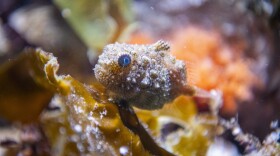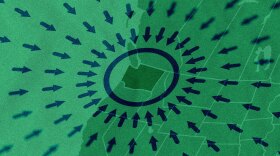Getting lost in an airport or giant hospital can be like getting lost in a giant maze. So, there's a risk when a hospital remodels and abandons its familiar landmarks.
But, Seattle Children’s hospital is hoping its new navigation system is better--and even will reduce stress and be fun.
The familiar "giraffe" and "train" entrances are gone as of this week, replaced by a system of zones, such as "ocean" and "forest." Each zone is filled with animal symbols, meant to be entertaining (and distracting) for thousands of sick kids who visit every week.
The art and science of "wayfinding"
The animals and colors are also a key part of a carefully crafted navigation system, designed by the Seattle firm Studio SC. They used popular tricks from an emerging design specialty called “wayfinding.”
Maybe you’ve noticed modern parking garages use color and symbols to help you remember which floor you parked on. That’s part of good wayfinding. Brain science has shown that people actually need landmarks in order to navigate.
Before the 1980s and 90s, architects took a piecemeal approach to helping us find our way. Airports in Europe learned first how to improve. At the updated Seattle Children's, you can see how wayfinding and other design goals are getting more sophisticated.
"One of our greeters could say, 'Follow the fish, until you see the mountain, then take a left and get on the bear elevator,'" says Todd Johnson, vice president for facilities.
The hospital treats teenagers, and even young adults with cancer, so the updated designs are also meant to appeal to them.
Still, it’s all new and unfamiliar, so the hospital has extra staff roaming the floors this week to help people who are lost.
For the complete story, click the "listen" button above.








